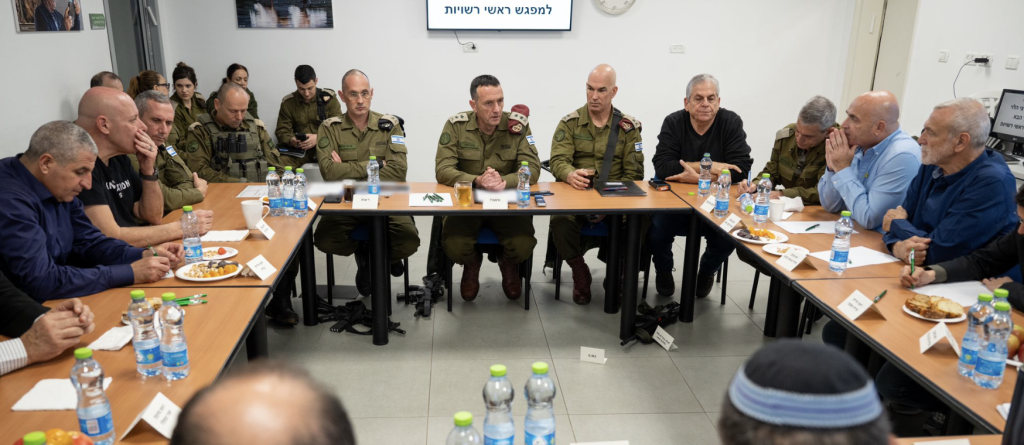
Several rockets fired from Lebanon on February 14 landed in the northern Israeli city of Safed, where the IDF’s Northern Command base is located, killing one soldier and wounding eight others. The attack is a significant escalation, given that Hezbollah has rarely targeted areas as far inside Israel as Safed, preferring to fire its rockets and missiles at border communities.
Israel evacuated all the communities along the border up to a depth of several miles in early October, moving around 80,000 people. Safed was not evacuated, because it is almost ten miles inside the border. The IDF Northern Command base was targeted on January 9 by a Hezbollah drone. In addition, Hezbollah targeted an IDF base on Mount Meron, the highest mountain in the Galilee, in January.
The attack on February 14 appeared different from previous attacks. Rockets landed in Safed and two rounds of siren alerts were set off in the city. However, later reports suggested the rockets were unguided grad rockets. Israeli media had postulated that the rocket attack involved precision rockets and the pro-Iran Al-Mayadeen had also suggested it was a “precise” attack. It was unclear whether Hezbollah carried out the attack. Hezbollah has launched thousands of rockets at Israel since its attacks began on October 8. Hezbollah leader Hassan Nasrallah gave a speech on February 13 in which he said Hezbollah would remain a threat and prevent Israelis from returning to their communities along the border unless the war in Gaza ends.
Israel’s Chief of Staff Herzi Halevi spoke to heads of local communities in northern Israel on February 14. “Thanks to you, the IDF can act decisively to change the security situation in the North. We have reached great achievements striking Hezbollah in Lebanon, but we continue to operate – this is not the time to stop. There is still a long way to go, and we will do it together,” he said. He referenced the attack on Safed and said he had “approved targets to strike in response.” He also said residents who have been evacuated for four months would return to their homes eventually. “We are intensifying the strikes all the time, and Hezbollah are paying an increasingly heavy price. The next campaign will have a very strong offensive, and we will use all our tools and capabilities. There is still a long way to go, and we will do it together,” Halevi said.
The Israel Defense Forces said that fighter jets carried out a series of strikes inside Lebanon. “Among the targets struck were military compounds, operational control rooms, and terror infrastructure used by Hezbollah terrorists. Several targets belonged to the Redwan Forces,” the IDF said. The IDF also said it struck the sources of the launches that targeted Safed and other border communities.
The IDF has invested in using engineering forces to clear new routes and roads in the north to enable civilians and soldiers to be less exposed to Hezbollah attacks near the border. This is due in part to the anti-tank guided missile threat that Hezbollah has used since October 8 to target vehicles and homes. More than 400 buildings in communities along the border have been damaged. Iran’s pro-government Tasnim News said on February 14 that Hezbollah has been supplied by Iran with the Almas missile, which Iran claims is based on Israel’s successful Spike missile.







